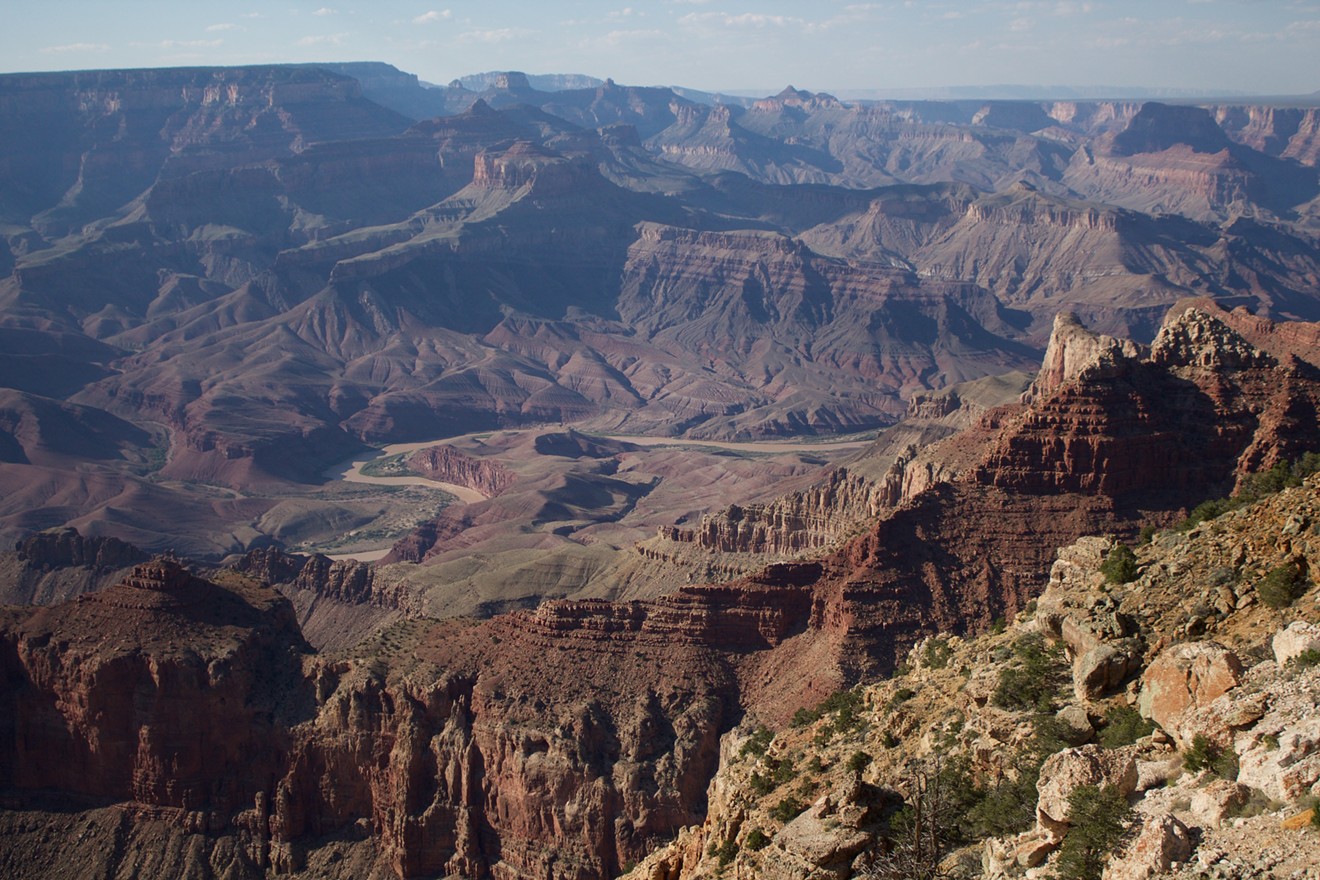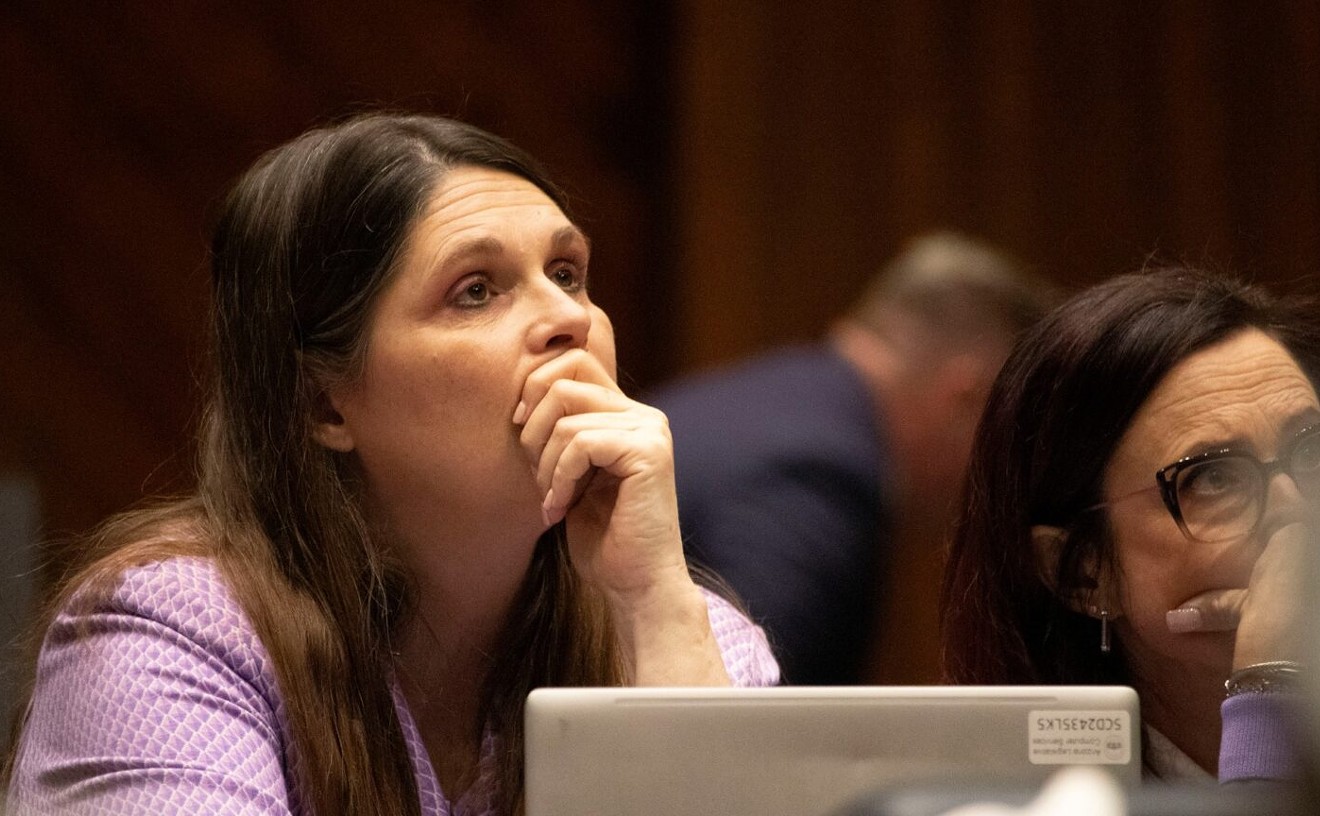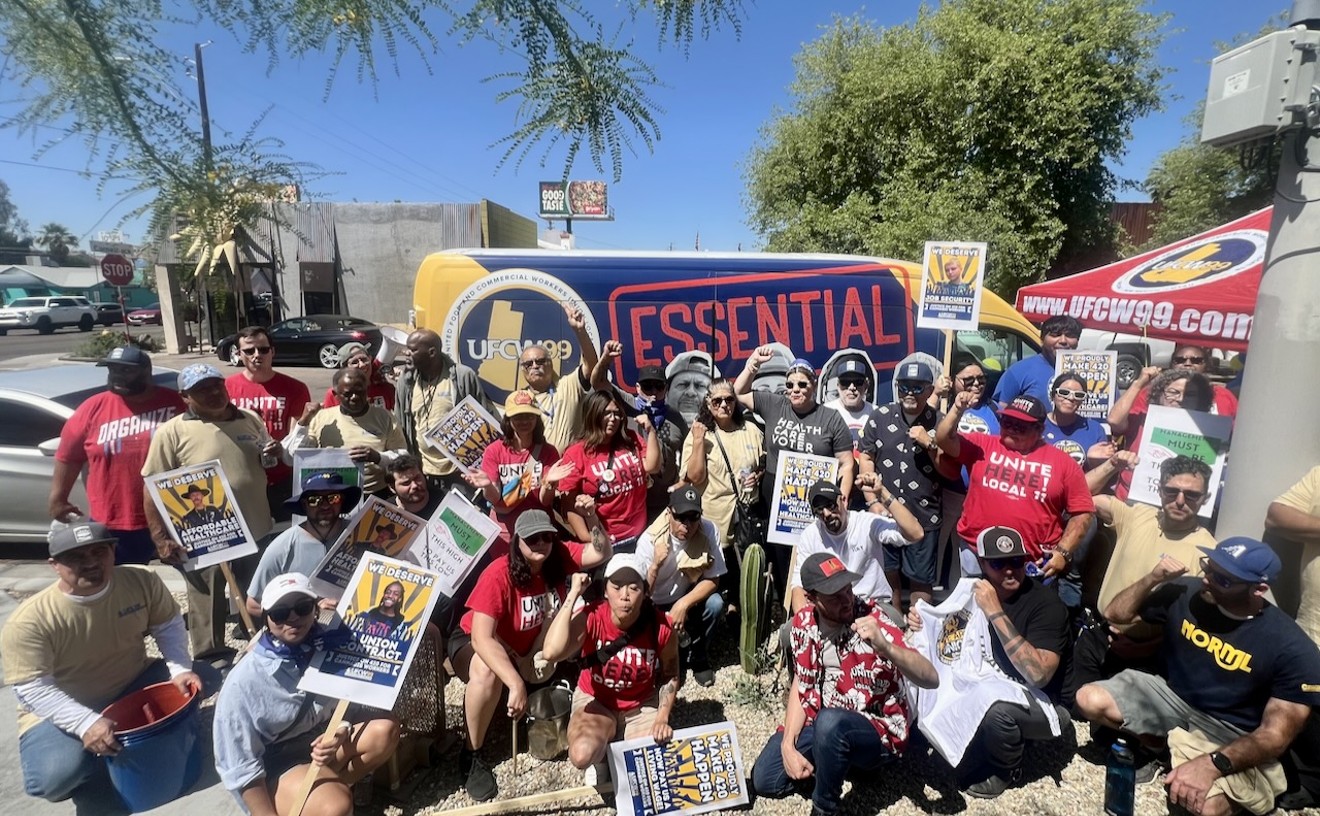The Trump administration may open up the lands surrounding the Grand Canyon to uranium mining, an industry that carries risks for the state’s water resources and has devastated Native American communities.
In a report released Wednesday, the U.S. Forest Service recommended that the administration revise a 2012 moratorium on new uranium claims in the region. Under the Obama administration's 20-year ban on new mining, 1 million acres of the Grand Canyon watershed were protected.
But now with this new potential rollback, conservationists are alarmed. They see no upside for anyone who has a stake in Arizona's most recognizable monument — unless, of course, you’re a mining magnate itching to extract uranium from the Grand Canyon region.
“Adding industrial mining to the sacred landscape is just inappropriate unless we were desperate for this resource,” said Kevin Dahl, senior program manager for the National Parks Conservation Association. “And frankly, we’re not.”
Some backstory: In 2012, Obama-appointed Secretary of the Interior Ken Salazar declared a moratorium on new mining claims and exploration, except for existing mines and claims. The decision was a major victory for conservation groups, which had lobbied extensively for an end to uranium mining during a public comment period.
But ever since the election, the same groups have been bracing for potential changes to the Grand Canyon landscape. In March, President Trump signed an executive order that directed federal agencies to assess and reduce the barriers to obtaining all domestic natural resources within their purview.
Trump's order immediately set off concerns for environmentalists because of the implications for the nation's national parks and public lands, including the Grand Canyon.
Since then, the Trump administration has already laid the groundwork to reduce the size of several national monuments. In another executive order one month later, Trump ordered a review of national monuments that were declared within the last 20 years, including four in Arizona.
As a result, Interior Secretary Ryan Zinke recommended boundary changes to four national monuments in Utah, Colorado, and Oregon.
The process hasn't been without controversy. On Thursday, six organizations, including the Sierra Club and the Natural Resources Defense Council, announced that they are suing federal land management agencies for withholding information about how public comments were incorporated into the monument review process.
So when the report from the Forest Service came out this week, it wasn't exactly a surprise. Nothing has been decided as a result of the recommendation. Nevertheless, the National Parks Conservation Association is urging members to contact the Forest Service and voice their opposition to renewed uranium mining.
A spokesperson for the Forest Service said that the report "is not a decision document," but merely made 15 recommendations to reduce potential burdens on energy development, per Trump's executive order.
"If it is adopted, this recommendation could re-open lands to mineral entry, and possibly exploration and development of uranium resources," Forest Service spokesperson Babete Anderson wrote in an email to Phoenix New Times. "There is no plan to do so at this time."
For Arizona's indigenous communities, the legacy of uranium mining is especially egregious. After 1944, mining companies ignored health concerns to fuel the cylinders of the atomic age, causing a painful spiral of cancer, kidney failure, and birth defects that continue to affect the Navajo Nation to this day. Hundreds of abandoned uranium mines in the Navajo Nation are still awaiting cleanup.
And for the Havasupai Tribe near the Grand Canyon, the possibility of renewed uranium mining comes as members are engaged in a fight against an existing mine. This summer, tribal members protested the reopening of the Canyon Mine, just six miles south of the Grand Canyon. Although the Canyon Mine's operator has yet to begin ore production, trucks have started to haul contaminated water past Red Butte, a mountain sacred to the Havasupai tribe, and across the Navajo Nation.
The Havasupai Tribe takes its name from the waterfalls of nearby Havasu Creek. Tribal Chairman Don E. Watahomigie said in a news release on Wednesday that the proposed uranium mining is a historic move that threatens the tribe.
“This is a dangerous industry that is motivated by profit and greed with a long history of significantly damaging lands and waters. They are now seeking new mines when this industry has yet to clean up the hundreds of existing mines all over the landscape that continue to damage our home,” Watahomigie said. “We should learn from the past, not ignore it.”
The industry says that post-Cold War mining safeguards will prevent these kinds of disasters from happening again. But the Grand Canyon's Colorado River supplies water to tens of millions in Arizona and the Southwest.
Amber Reimondo, the energy program director of the Grand Canyon Trust, said that because uranium contamination of groundwater can happen in a variety of ways, people are vulnerable no matter what mining companies say.
"The fact is, there is risk and there is uncertainty," Reimondo said. "And when you’re talking about something as sacred and special as the Grand Canyon, is that even worth risking?"
Part of what’s confounded opponents to mining the Grand Canyon is that there’s no imminent need for nuclear fuel nationwide. The days of a headlong rush to obtain uranium during the Cold War, with its shameful consequences for the Navajo Nation, are long past.
Yet the recommendation from the Forest Service is the result of Trump’s executive order that mandated agencies find every possible avenue to extract resources from the public lands. Reimondo said the benefits are clearly geared toward private mining interests.
"Who stands to bear the risks and pay the ultimate costs are the public and Native American tribes,” said Reimondo. “And, of course, the lands and waters within the Grand Canyon.”
Antonia Noori Farzan contributed reporting.
[
{
"name": "Air - MediumRectangle - Inline Content - Mobile Display Size",
"component": "18478561",
"insertPoint": "2",
"requiredCountToDisplay": "2"
},{
"name": "Editor Picks",
"component": "16759093",
"insertPoint": "4",
"requiredCountToDisplay": "1"
},{
"name": "Inline Links",
"component": "17980324",
"insertPoint": "8th",
"startingPoint": 8,
"requiredCountToDisplay": "7",
"maxInsertions": 25
},{
"name": "Air - MediumRectangle - Combo - Inline Content",
"component": "16759092",
"insertPoint": "8th",
"startingPoint": 8,
"requiredCountToDisplay": "7",
"maxInsertions": 25
},{
"name": "Inline Links",
"component": "17980324",
"insertPoint": "8th",
"startingPoint": 12,
"requiredCountToDisplay": "11",
"maxInsertions": 24
},{
"name": "Air - Leaderboard Tower - Combo - Inline Content",
"component": "16759094",
"insertPoint": "8th",
"startingPoint": 12,
"requiredCountToDisplay": "11",
"maxInsertions": 24
}
]












